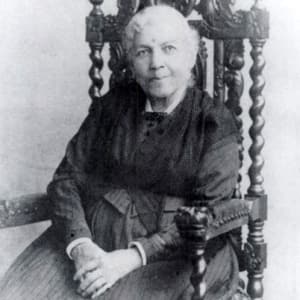
Donald Neilson
Donald Neilson, also known as the “Black Panther,” is the English murderer responsible for the death of Lesley Whittle.
Synopsis
Donald Neilson was born on August 1, 1936, in Bradford, England. After leaving the army for his family, Neilson took up burglaries to supplement his income. He robbed and killed at post offices before kidnapping Lesley Whittle, an English heiress. An enraged Neilson killed Lesley over a failed ransom exchange. Eventually Neilson was caught and convicted. After serving consecutive life sentences, Neilson died in prison in 2011.
Post Office Murders
Donald Neilson was born Donald Nappey in Bradford, England, on August 1, 1936, and seems to have enjoyed a relatively normal, crime-free childhood in Britain, marred only by the teasing and bullying that he was subjected to on account of his surname. He was married in 1955, and the birth of his daughter, Kathryn, five years later prompted him to change his name to Neilson, so that she would not suffer a similar fate.
Neilson was persuaded by his wife to give up a career in the army, and they settled in Bradford, where he tried various professions, including the building trade and security work. Financial success was not forthcoming, and in 1965 he branched out into house burglary to supplement his income. Despite committing hundreds of burglaries, his new trade did not provide the income he hoped for, and he graduated to armed post office robberies by 1967, committing at least 19 over a seven-year period. In 1972, one of these raids resulted in the non-fatal shooting of a Lancashire postmaster, who misguidedly put up resistance during the raid. Neilson's practice of wearing a dark-colored balaclava during his robberies earned him the sobriquet "The Black Panther" from the media.
Neilson's hardened criminal behavior became more entrenched with each robbery and, on February 15, 1974, during a raid on a Harrogate sub-post office (a privately-run post office), he shot dead the postmaster, Donald Skepper. Having kept a low profile following the first murder, and the ensuing police hunt, he took another life seven months later, when postmaster Derek Astin was shot dead in Lancashire during the course of another raid. The police quickly came to the conclusion that they were looking for the same killer in both cases.
Just nine weeks later, a third postmaster, Sidney Grayland, was shot dead during the commission of a robbery in the West Midlands. Forensic evidence at the scene linked this death to the first two. Despite the three deaths the media showed little interest in the attacks, and Neilson was dissatisfied with the lack of attention, as well as the relatively slim pickings to be had from the post office raids.
Lesley Whittle Murder
Still searching for that elusive big payout, Neilson settled on kidnapping as his best route to success, choosing Lesley Whittle, a 17-year-old heiress to a transport fortune. He gathered as much information about her as he could and made comprehensive plans for her incarceration, as well as the delivery of the ransom that he planned to demand for her return.
On January 14, 1975, Neilson broke into the Whittle family's Shropshire estate and abducted Lesley from her bedroom without incident, leaving a ransom note that demanded 50,000 pounds. The note also gave detailed instructions for the ransom drop by Lesley's brother, Ronald, and included a warning not to involve the police. Lesley Whittle was held in a drainage shaft beneath Bathpool Park, in Staffordshire.
The Whittle family chose not to heed the ransom warning, and informed both the local police and Scotland Yard of the abduction. Poor communication between the different police factions led to a media leak, which convinced police that the kidnapper had been scared off by the media attention. This wasn't the case, however, and when Neilson called the designated phone box in accordance with his ransom instructions, Ronald Whittle was not there to take his call.
Two further ransom delivery attempts were bungled over the next 72 hours, as a result of both poor police coordination and bad luck, but at least police were sure that Lesley was still alive at this time, as it was her voice that recorded the details for the second failed ransom drop, in Bathpool Park itself. On the tape, she seemed calm and collected, given the circumstances. It has been claimed that Neilson spotted a police vehicle in the area at the time of the second drop and decided not to risk a police trap, aborting the ransom drop. Unbeknownst to the police, the second failed attempt ended just yards from the drainage shaft where Lesley was imprisoned, but no search of the immediate area was carried out at the time. Furious that his instructions had not been followed, Neilson waited nearby for Ronald Whittle and the police to leave before entering the drainage shaft and killing Lesley Whittle in a rage. Had police conducted a thorough search before leaving, there was every chance they might have discovered Lesley alive.
On the same night as the last aborted drop, Neilson was involved in a freight train terminal robbery, during which a security guard, Gerald Smith, was fatally injured. Forensic evidence again linked the crime to the Black Panther post office heists, but no connection was made to the Whittle kidnap at that time. It took police more than a week to discover Neilson's stolen getaway vehicle, which he had abandoned close to the terminal, in which tapes of Lesley Whittle's voice and ransom drop instructions were found.
Arrest and Trial
Despite the discovery of her body, police made little progress on the whereabouts of the "Black Panther," and it was nine months later, on December 11, 1975, that he was caught. Having returned to post office raids following the failure of his kidnap attempt, he was finally apprehended by two policemen in Mansfield Woodhouse, near Nottingham, for acting suspiciously in the vicinity of the local post office. A search of his home revealed panther masks, as well as a model of a black panther and, after extensive questioning, Neilson confessed to being the Black Panther. Regarding the murder of Lesley Whittle, however, he claimed her death had been an accident, and that she had been accidentally knocked from the ledge in the drainage shaft.
Neilson's trial commenced at Oxford Crown Court on June 14, 1976, amidst a media circus. He was charged with four murders, as well as various other charges of attempted murder, grievous bodily harm, robbery, kidnapping and firearms possession. Prosecutors were unable to charge him with the murder of security guard Gerald Smith, as he had survived more than a year and a day beyond the brutal attack, and the law prevented a murder charge being brought, despite his eventual death being a direct result of this attack. The law in the United Kingdom has since been changed to prevent this anomaly from recurring.
On July 1, 1976 Neilson was unanimously convicted on all charges, with the exception of two charges of attempted murder. He received five life sentences in total, with the judge insisting on no possibility of parole.
In 2008, Neilson applied to the High Court to have his minimum term reduced to 30 years. His appeal was rejected, however, and the court told him that he would spend the rest of his life in prison. After suffering from pneumonia and a chest infection, Neilson died prison in Norwich, Norfolk, England, on December 18, 2011.




